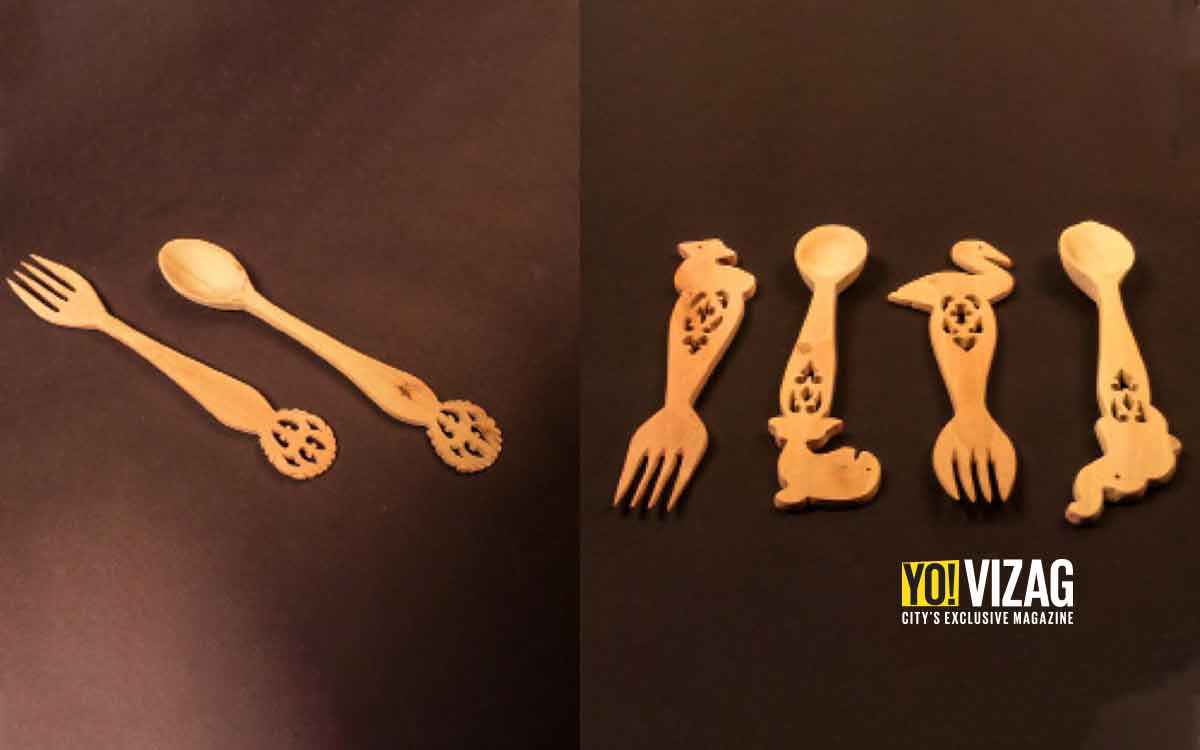

The century-old craft form of Udayagiri in Nellore District, Andhra Pradesh, is now regaining attention for its wooden cutlery.
Udayagiri is known for its intricately carved wooden cutlery, soap cases and bowls. Its origin dates back to a hundred years when the kings of yesteryears patronised it. However, over time, the attention to this craft form slowly reduced. Zakeer Shaik, one of the few craftsmen working for its revival as a fourth-generation artisan, shares that he learnt the craft from his mother. He shares that Bashir, a student of his grandfather, taught the craft to ten women, his mother being one of them. His work also won him the State Award in 2001. However, it was around this time, that Udayagiri Cutlery saw a downfall. There weren’t enough artisans making and marketing it, and for a time period, work stopped completely. Zakeer’s mother then took it upon herself to revive the craft form. With the support of people who knew the craft, she trained 90 more, and they restarted work.
Zakeer, who like others, had taken up a well-paying steady job, decided to return to the craft form. Seeing his mother’s dedication, he started to assist her, motivated by the fact that this craft is unique to Udayagiri, and found nowhere else in the world. “I did not want it to fade into oblivion”, he shares. Taking to the digital platform, he started reaching out to more people about this craft. While Zakeer’s mother received the State Award in 2005, a significant point came when Udayagiri was awarded the Geographical Indications (GI) tag for being the only region with such a craft form.
Zakeer elaborates that the work at Udayagiri has a great future and many prospective buyers. However, his concerns are on manpower and machinery. “Of the 90 people we trained, only 20 continue to make Udayagiri Cutlery today.” So while orders are flowing in, it is difficult to meet production requirements with such a small team. Schemes and opportunities that would allow for training more people on this craft form are thus the need of the hour, he shares. Introduction of machinery may also help to speed up the process, as currently 90% of the work has to be done by hand. He also adds that the training programme should be for a minimum of six months, to have an impact.
The making of Udayagiri Cutlery takes skill and patience. He shares that the local wood of Devadari, Nardi and Kalidi are sourced and dried for ten days. The wood is then soaked in water for 2 days, and then dried again in the shade for 3 days. The process of making cutlery then begins and takes time depending upon the design. Constantly introducing new designs, each of their products has a long shelf life.
With Lepakshi having come forth with support, he shares that today it is one of the major outlets for Udayagiri’s craft form. Additionally, the Crafts Council of Andhra Pradesh is also providing Udayagiri a platform to showcase its work. And we can only hope that the once dying craft rises back into prominence once again.
How to get there: A five-and-half hours drive from Vijayawada, the region is accessible by road.
This post was last modified on 09/02/2020 3:30 pm
If you’re not already hooked on K-dramas, it’s time to ask yourself: what are you…
Andhra University, the heartbeat of Vizag’s student life, stands tall not just as one of…
To accommodate the increased passenger traffic during the summer season, Indian Railways has announced the…
In a major employment initiative, a mega job mela is scheduled to take place today…
Elaborate preparations are underway, and tickets are ready to go on sale at the Simhachalam…
If you're reading this - congratulations, you've gotten through half the week successfully! Bad news…
Leave a Comment